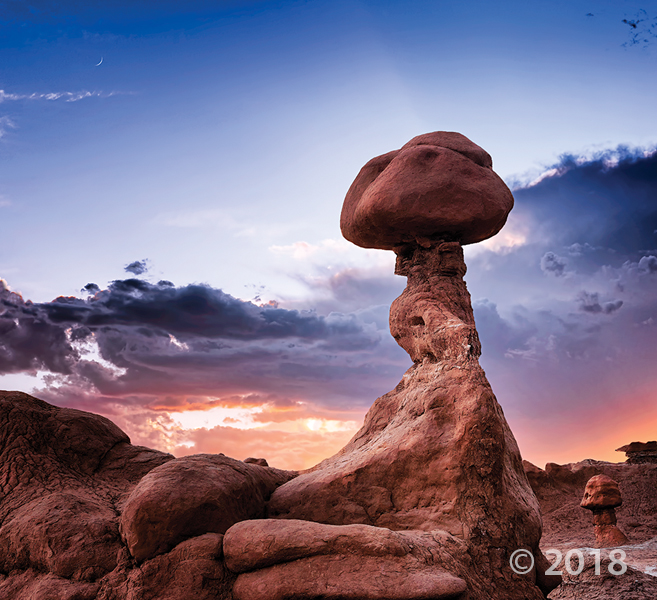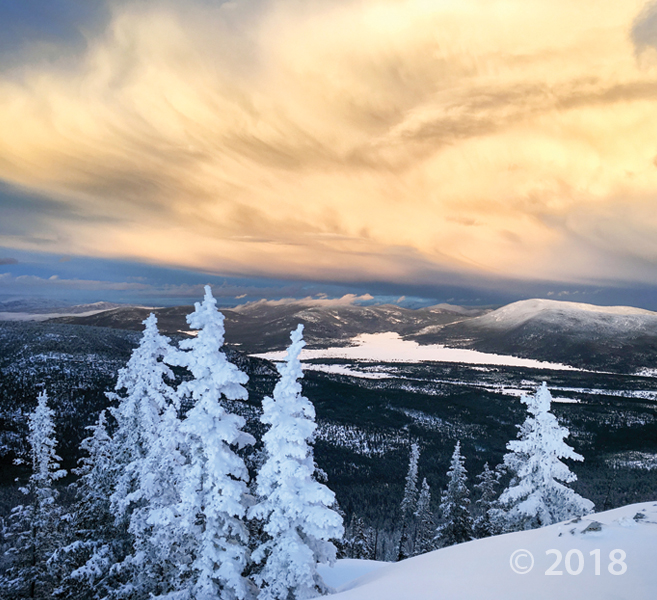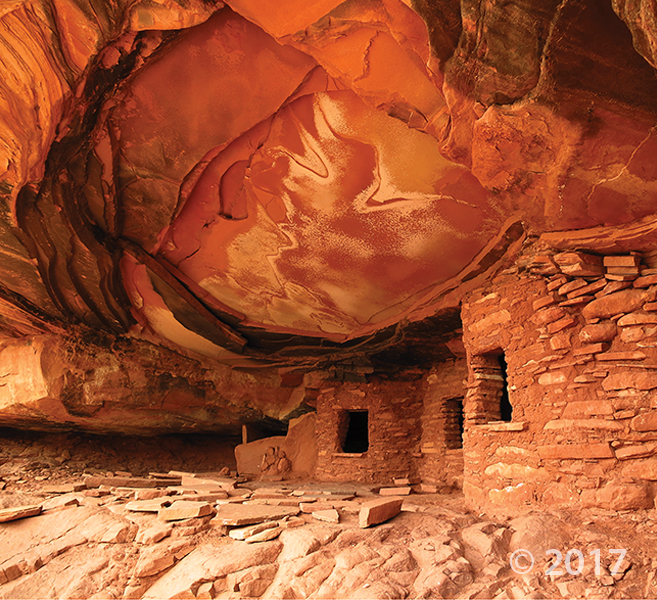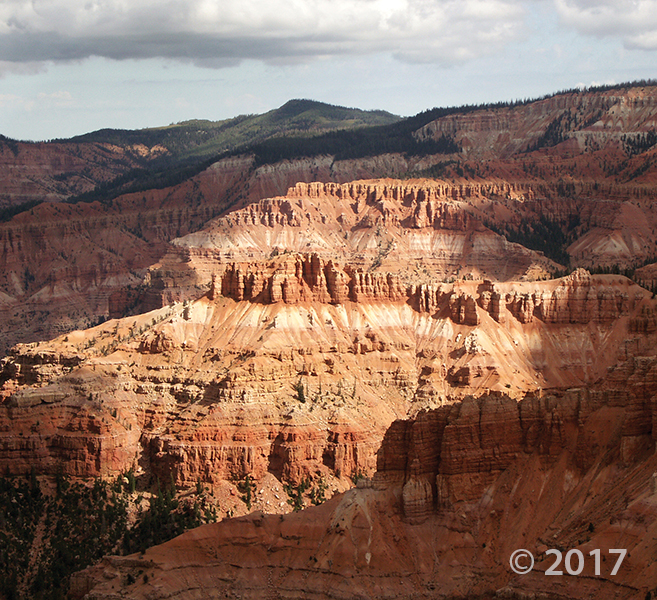Cedar Mesa, San Juan County
Photographer: Tyler Knudsen © 2017
An overhanging ledge of Permian-age Cedar Mesa Sandstone protects ancestral Puebloan ruins in Road Canyon. The informally named “Fallen Roof” ruin owes its name to the prominent spalling and collapse of thin sandstone slabs from the overhang’s ceiling.
Cedar Breaks National Monument, Iron County
Photographer: Ken Krahulec © 2017
Headward erosion into the Markagunt Plateau has created the spectacular badlands of the Cedar Breaks amphitheater. The brightly colored rocks of the Claron Formation include limestone, mudstones, sandstone, and conglomerate deposited in streams and lakes around 50 million years ago, as well as ancient soils developed in these deposits.












